For this lesson, there is no content, other than reading the book. If you have any questions about the content, or what you are required to do please contact me. Since there is no content to post, I figured I'd share some energy- and sustainability-related photos with you from my time in Switzerland. I have taken students there a number of times, and plan to return in the future (possibly 2024). As ESP students, you can enroll in the course and get your 3 Foreign Studies credits, as the travel comes after an online 3-credit Alternative Energy Technologies course. If you are not an ESP student, you would still be welcome to enroll! You would learn a lot about renewable energy before you travel, then see a lot of renewable energy and sustainability installations first hand while traveling.
You can click on each image to view a larger image, if you are so inclined. Enjoy!
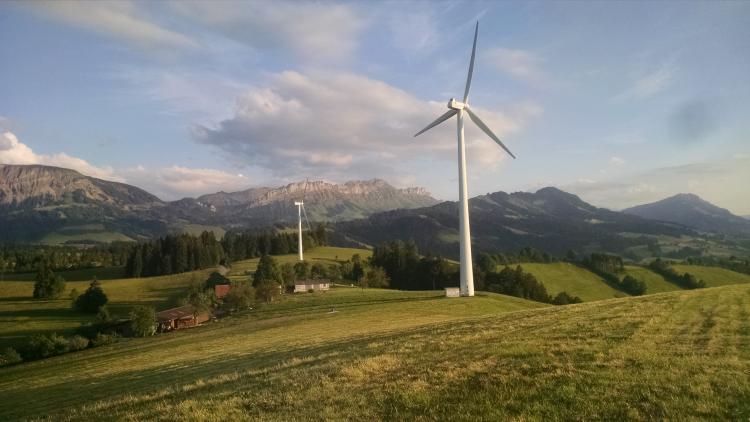
Figure 8.1: This is one of my favorite photos from Switzerland. We are standing at the top of a small mountain in the Entlebuch region of Switzerland. The
entire region is a UNESCO biosphere reserve. We visited a family that grows organic herbs, mostly for Ricola. Alas, we did not get to see the turbines any closer.
Credit: D. Kasper
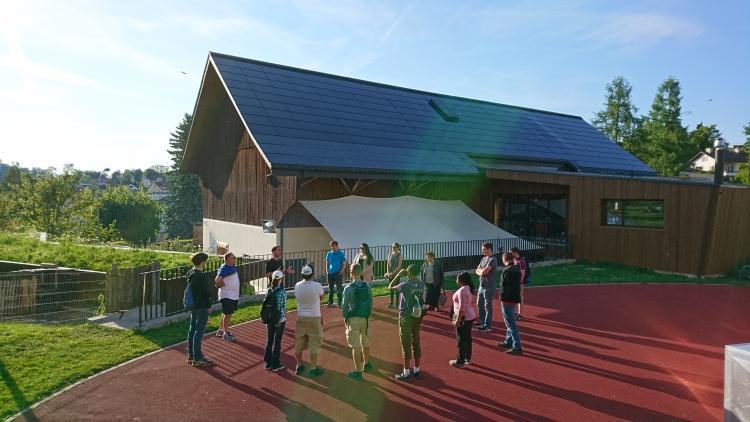
Figure 8.2: In this picture, we are starting our tour of the Musegg Solar Farm. This array generates nearly 80,000 kWh of electricity each year. For some context, this is enough to operate about seven "average" U.S. homes for a year.
Credit: D. Kasper
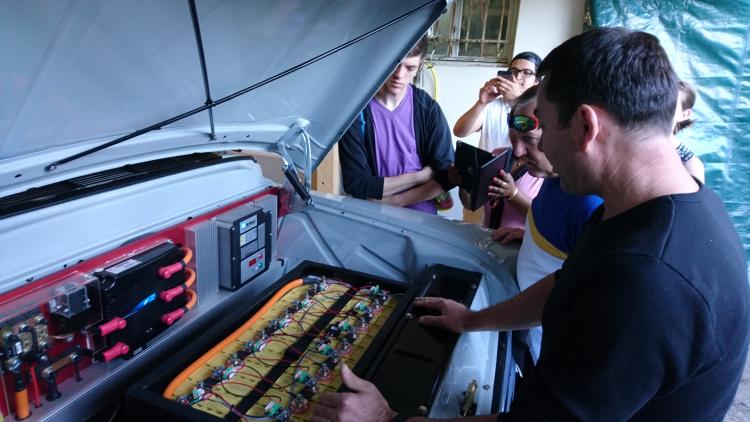
Figure 8.3: In this image, Walter (who takes care of the farm and castle wall, but works in the Energy Office in Zug) shows us the '57 Chevy that he personally retrofitted to run entirely on electricity, using 100% solar energy of course! We later had a BBQ with him on the farm.
Credit: D. Kasper
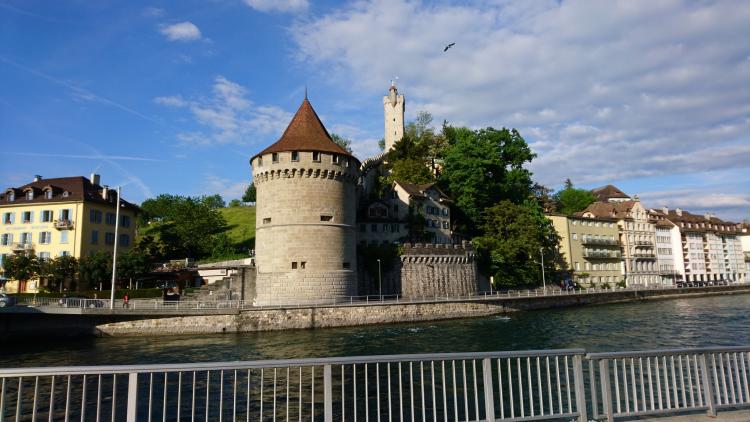
Figure 8.4: This is the Musegg Wall in Lucerne, with most of the original stone from 1386. It is the old castle wall, and the tower you see in the foreground has a tunnel big enough for cars to go through. (The tunnel was added well after the tower was built, of course!) The farm is behind the yellow building on the left, and the city of Lucerne - where we stay for the first five days of our trip - is to the right.
Credit: D. Kasper
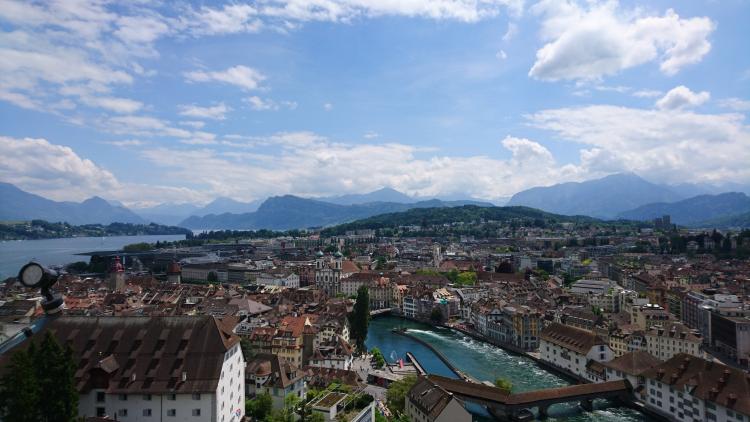
Figure 8.5: Here is a view looking south over Lucerne from the castle wall. You can walk the length of the wall, and there are nine towers on the wall, complete with arrowslits and battlements, and one clock tower. You can see Lake Lucerne in the background, and the Swiss Alps (snow caps and all) behind it. It's really neat that there is a small solar farm about 100 meters behind us as we look over this bustling, historic city.
Credit: D. Kasper
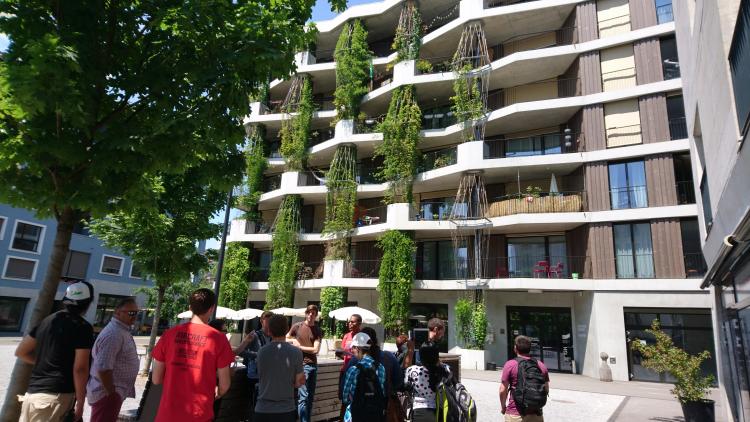
Figure 8.6: This is one of the many cooperative housing units in Zurich. The name of this complex is Mehr als Wohnen ("more than housing"). Each unit has multiple rooms with a shared kitchen and common area, and if you live here you are not allowed to have a car or a washing machine. You should see the bike racks in the basement! The entire complex is owned and run by the residents, including a restaurant and a few other businesses. There are around 1200 people living in nearly 400 apartments in 11 buildings. They even promote art by requiring that a minimum of 0.5% of the down payment from each person must be used for art. Co-ops are very popular in Zurich, as they are subsidized by the city government, and are less expensive than standard apartments in Zurich. Incidentally, Zurich is one of the most expensive cities in the world.
Credit: D. Kasper
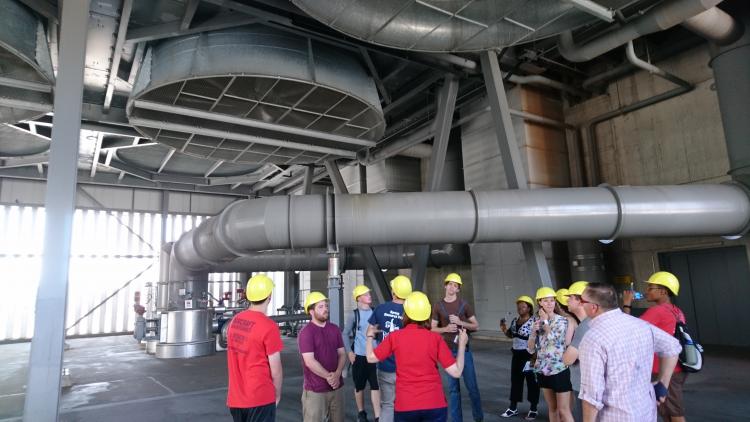
Figure 8.7: Finally, here is a picture of the inside of a waste incineration plant in Zurich. They generate 110,000 MWh of electricity by "thermally recycling" 230,000 tons of waste each year. They recycle all metals that can be pulled out before incinerating the waste. It's quite an amazing operation. Swiss engineering at its finest.
Credit: D. Kasper
